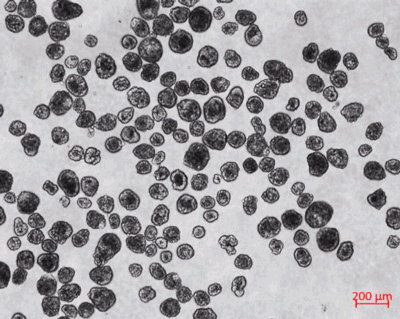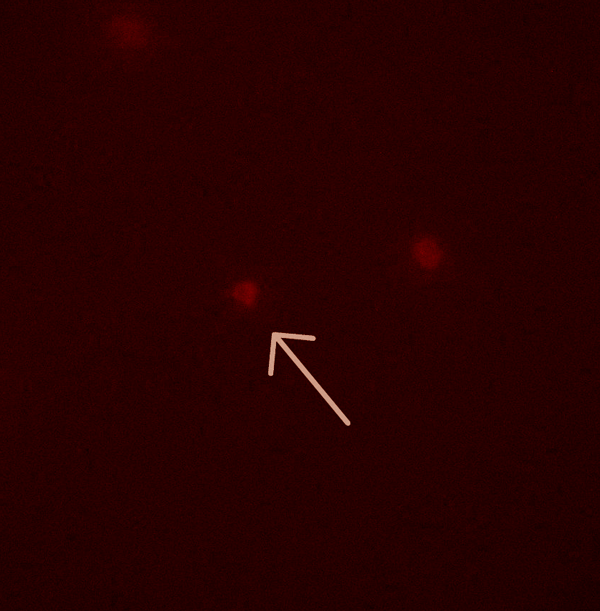Anthrobot swarm. Each Anthrobot autonomously builds itself from a single seed cell in the course of a 2 week period, therefore numerous Anthrobots can be grown in parallel, giving rise to sizeable swarms.
Each Anthrobot builds itself from a single cell in the course of 2 weeks. During which time all the architect needs to do is to "feed" the structure (once a week, w/ DMEM and Retinoic Acid).
This autonomous construction process yields structural variation on a theme: Anthrobots can morphologically assume one of 3 cilliated spheroid types: homogeneously and densely ciliated with small body (morphotype 1), homogeneously but sparsely ciliated with large body (morphotype 3), and finally polarized and densely ciliated with medium-size body (morphotype3).
We have reached to this conclusion of 3 morphotypes by analyzing (A) 350 Anthrobots where we collected 3-dimensional structural data via confocal microscopy (a.1) and by built a downstream discretization (a.2) and structural analysis (B) pipeline, where we ranked each one of 350 Anthrobots by different morphological features (C) and observed different weights for these structural properties in each morphotype (D).
PCA and clustering analyses revealed 3 distinct morphotypes, with statistically significant structural differences in each morphotype.
We have then extended the same analysis into the behavioral types of Anthrobots by tracking 200 Anthrobots for 5 hours and collecting their motility pattern data.
After collecting motility data from ~200 Anthrobots (A), we have aggregate plotted these tracks in 30-second periods along straightness and gyration indices (B) and observed the emergence of 4 statistically distinct classes of behavior: circular movers, linear movers, curvilinear movers, and ecclectics, as shown in their trajectory samples (C). We have further discovered that a bot can switch between these different classes of behavior (D) with some probability.
Example of a circular moving bot.
Example for a linear moving bot.
Next, we analyzed the correlation between these different classes of shapes with different classes of motility and observed a significant overlap! This meant, different morphologies are correlated with different behavioral classes, hence a link between architecture and functionality.








